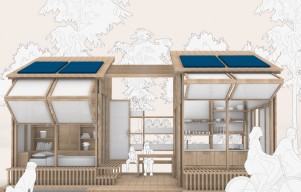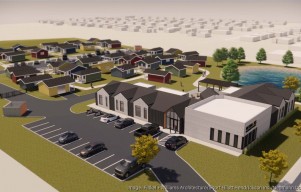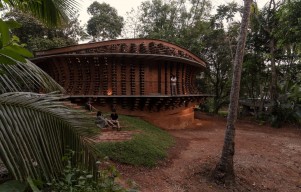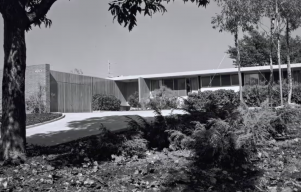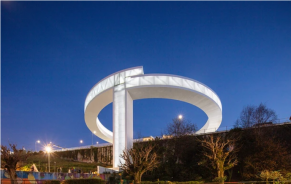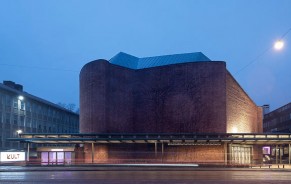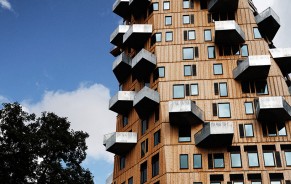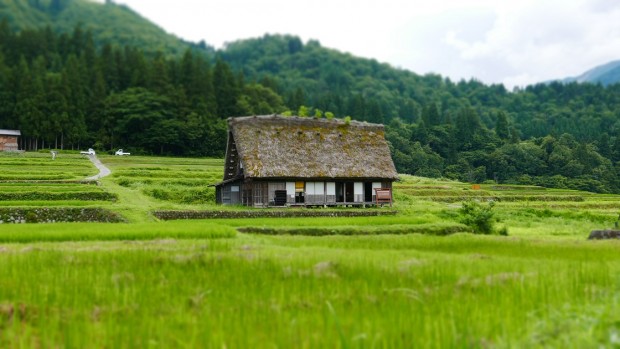
A relentless magnitude 7.6 earthquake shattered the peace on New Year's Day in the picturesque scenery of Japan's Noto Peninsula. Devastating structures were toppled, and the seismic waves sparked panic. A tiny fishing community, however, managed to survive the mayhem and demonstrate the resilience of "smart architecture" against the destructive force of nature. This article delves into the resilience of this village, exploring the tenets of smart architecture that shielded it from the earthquake's impact.
Smart Architecture
The survival of the tiny hamlet on the Noto Peninsula was not a stroke of luck but a triumph of strategic planning. Decades of refinement and deep roots in traditional building methods have resulted in smart architecture, becoming the village's defense against seismic destruction. The earthquake's force destroyed the wooden buildings surrounding the roughly 100 structures that stood firm against the powerful tremors.
Building Resilience
A constant emphasis on resilience is at the core of smart architecture. Advanced engineering methods, well-placed structural reinforcements, and flexible materials are all incorporated into this design concept. Redistributing and absorbing seismic forces is the primary goal of reducing the impact of natural disasters' impact on the built environment. The tiny fishing village's capacity to endure provides proof of the usefulness of these architectural strategies and demonstrates that resilience is an actual outcome rather than just a theory.
The Village's Success Story
The resilience displayed by the village in the aftermath of the earthquake is a profound lesson for regions globally that grapple with the threat of seismic activity. The clever architecture of the village provides some hope, even as the rest of the Noto Peninsula starts the long process of rehabilitation. It supports the idea that building structures with natural disaster resistance is sensible and essential, particularly in regions where disasters can strike at any time.
Championing Disaster-Resilient Construction
The village's resilience serves as a sobering reminder to the global construction sector to prioritize disaster-resilient building practices. When there is a high risk of devastation due to earthquakes, it becomes imperative to implement the principles of smart architecture. The lessons learned from this small fishing village highlight how important it is to reduce the effects of seismic forces by using cutting-edge engineering, strategically reinforcing buildings, and using flexible building materials.
Global Implications
The resilience demonstrated by the village of Noto Peninsula serves as a model for disaster management and urban planning, particularly in light of the increasing frequency of natural disasters. It forces legislators, engineers, and architects to reevaluate and rethink resilience-focused building designs. Because of its ability to coexist with the unpredictability of nature, the village serves as a model for creating environments resistant to the unpredictable forces of earthquakes and, consequently, other natural disasters.
Smart architecture on Japan's Noto Peninsula has told the world a powerful story of triumph over tragedy. The ability of the modest fishing village to withstand a formidable earthquake stands as both a source of inspiration and a rallying cry. It urges the international community to prioritize the construction of disaster-resilient structures, observe the implemented architectural strategies carefully, and embrace a forthcoming era where our constructed surroundings are shaped by our capacity to coexist peacefully with the natural world's inherent unpredictability. The story of this village is not just a local success; it is a universal lesson in resilience and the potential for smart architecture to transform disaster-prone regions into havens of strength and stability.
Related Article: How Japan Spent More Than a Century Building Earthquake-Resistant Structures
